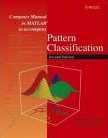
Computer Manual - Algorithms Overview
What can I do with the Computer Manual
- Classify two dimensional, two class, data using a graphic user interface.
- Enjoy easy access to over 50 classification algorithms and over 20 clustering and feature reduction methods.
- Compare the performance of several algorithms on your data.
- Find the best parameters for running an algorithm on your data.
- Generate your own datasets either by entering parameters or through a graphic interface.
- View how clustering algorithms progress through their training.
- Make nice figures of your results.
List of algorithms
Classification algorithms
- Ada Boost
- Backpropagation neural network (Five variants)
- Balanced Winnow
- Perceptron (Several variants)
- Relaxation (Several variants)
- Bayesian Model Comparison
- C4.5
- Cascade-Correlation type neural network
- Classification and regression trees (CART)
- Component classifiers with/without discriminant functions
- Deterministic Boltzmann classifier
- Discrete Bayes classifier
- Expectation-maximization (EM)
- Genetic algorithm / programming
- Gibbs algorithm
- ID3
- Interactive Learning
- Linear Least squares / LMS
- Local polynomial fitting / boosting
- LVQ1 / LVQ3
- Marginalization / Maximum likelihood
- Multivariate adaptive regression splines
- Nearest Neighbors / Editing
- Optimal brain surgeon / Parzen windows / PNN
- Projection pursuit / Recurrent / Radial basis function networks
- Reduced coulomb energy algorithm (RCE) / RDA
- Store-Grabbag / Stumps / SVM / Voted perceptron
Clustering algorithms
- Agglomerative clustering (ADDC / AGHC)
- BIMSEC / Basic leader-follower clustering
- Competitive learning / Deterministic annealing (DA)
- Distinction sensitive learning vector quantization (DSLVQ)
- k-Means / Kohonen SOFM / Fuzzy k-means
- Fishers' linear discriminant / LVQ1 / LVQ3
- Minimum spanning tree / PCA (KLA) / Stepwise optimal hierarchical clustering (SOHC)
- Stochastic simulated annealing (SA)
Feature selection and feature reduction algorithms
- Culling genetic algorithm / Hierarchical dimensionality reduction (HDR)
- Independent component analysis (ICA) / Multidimensional scaling (MDS)
- Non-linear / Principle component analysis (NLPCA / PCA)
- Information-based selection
